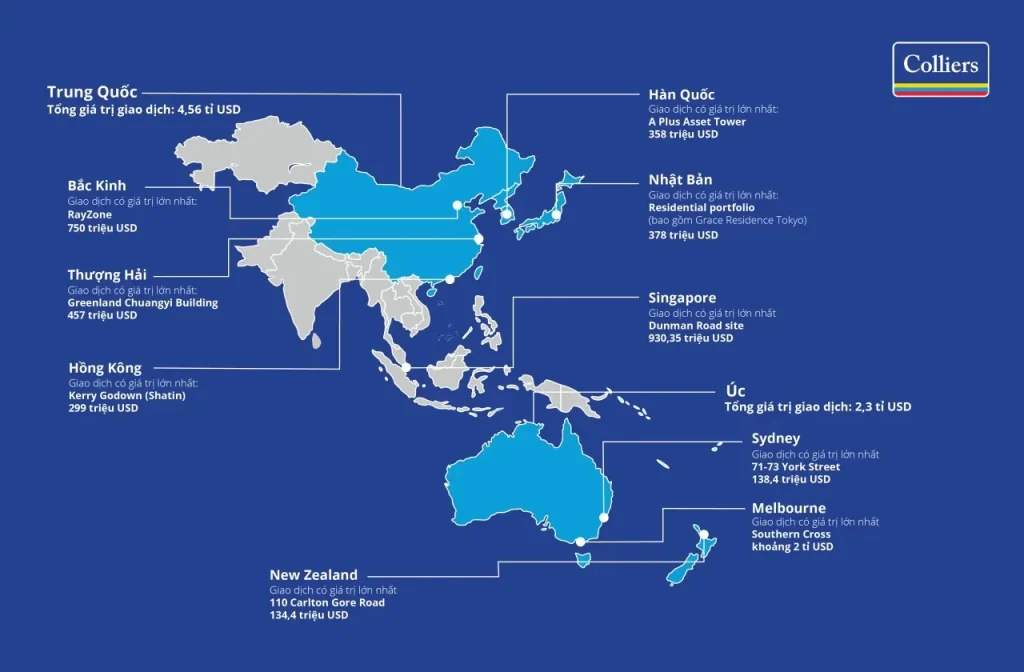Asia-Pacific markets are gearing up for positive momentum as optimism surrounding the de-escalation of U.S.-China trade tensions casts a favorable outlook on the region’s economic stability. Following proactive discussions held in Switzerland, both nations have signaled a willingness to resolve their ongoing trade discord, boosting investor confidence in key indices such as the Nikkei 225 and the Hang Seng Index. As trade negotiations progress, experts are optimistic about the potential impact on global market predictions, expecting growth across the board. The Australian S&P/ASX 200 looks set for a slight uptick, reflecting the overall positive sentiment in the Asia-Pacific markets. With the promise of reduced trade barriers, analysts are keeping a close eye on how these developments will influence investments and economic recovery in the region.
The economy of the Asia-Pacific region is at a pivotal moment, as discussions between leading economies hint at thawing trade relations. This area, known for its diverse financial markets and significant global economic influence, is witnessing an encouraging shift in investor sentiment amidst the backdrop of U.S.-China relations. Market analysts are focusing on major indices, including Japan’s Nikkei 225 and Hong Kong’s Hang Seng, as potential indicators of broader economic trends. Furthermore, the recovery signals from the Australian S&P/ASX 200 reflect a cautious optimism as these markets align themselves with shifting global economic dynamics. As attention turns to future market developments, the potential for revitalization in this vibrant economic landscape remains a priority.
Optimism in Asia-Pacific Markets Amid U.S.-China Trade Developments
The Asia-Pacific markets are brimming with optimism as recent developments in U.S.-China trade relations suggest a potential de-escalation of tensions. Significant discussions held in Switzerland have resulted in both countries expressing a renewed commitment to resolving ongoing trade issues, which has sparked a positive sentiment among investors. The U.S. has indicated a focus on reducing the trade deficit, and China’s leaders have communicated an important consensus that could lay the groundwork for future cooperation. As global markets react favorably to these developments, analysts anticipate upward movements in indices such as the Nikkei 225 and the Hang Seng Index, reflecting this newfound optimism.
This surge in confidence is particularly relevant for investors eyeing growth opportunities within the Asia-Pacific region. The adjustments in trade policy can lead to enhanced economic stability across major markets, potentially lowering tariffs and fostering a more open trading environment. As a result, expectations are high that markets such as Japan’s Nikkei 225 will experience increases as futures contracts indicate a higher opening. This scenario not only benefits regional investors but also signals a more stable global market landscape, paving the way for improved global market predictions that hold promise for the future.
Impact of U.S.-China Trade Talks on Key Asia-Pacific Indices
The implications of the U.S.-China trade negotiations are particularly pronounced for key stock indices across Asia-Pacific markets. For instance, Japan’s Nikkei 225, which has been closely tied to export performance, is expected to see a positive shift as discussions hint at a more favorable trade environment. Similarly, Hong Kong’s Hang Seng Index, which has been more sensitive to trade uncertainties, may witness considerable fluctuations depending on any announcements from the ongoing negotiations. With investors closely monitoring these indices, even slight indications of progress in trade talks could lead to substantial movements in stock prices.
In Australia, the S&P/ASX 200 is also positioned to reflect these sentiments, with futures indicating a slight uptick in the index. The interconnectedness of these indices demonstrates the broader impact of geopolitical events on regional economies. As U.S. futures have risen in anticipation of good news from trade negotiations, it is likely that Asia-Pacific markets will follow suit, potentially leading to a synchronized rally in stock prices across various indices. This interconnected market behavior reinforces the idea that any positive developments in U.S.-China relations could drive a trend of recovery and growth across the Asia-Pacific region.
Investor Sentiment and Market Predictions
Investor sentiment has shifted significantly amidst the optimism surrounding U.S.-China trade talks. The productive discussions that took place over the weekend have rejuvenated investor confidence, particularly in Asia-Pacific markets. Many analysts predict that if the negotiations continue positively, we may witness a wave of bullish trends across major indices, which can greatly affect long-term investment strategies. The Nikkei 225 and the Hang Seng Index are likely to witness enhanced trading volumes as investors position themselves in anticipation of potential gains.
Global market predictions become particularly interesting in this context, as they take into account the ripple effects of improved U.S.-China relations. A resolution to trade tensions could lead to increased market vibrancy, impacting not only Asian equities but also drawing interest from international investors seeking opportunities in emerging markets. Stakeholders are now more inclined to act on upbeat sentiments, which can further accelerate upward trends in markets. Thus, maintaining a close watch on the developments in U.S.-China trade relations will be essential for navigating the Asia-Pacific investment landscape.
An Analysis of Historical Trends in Asia-Pacific Markets
Historically, Asia-Pacific markets have shown resilience in the face of geopolitical tensions, with patterns of recovery often emerging from favorable trade agreements. The recent talks between the U.S. and China represent a pivotal moment reminiscent of past negotiations that have led to market rebounds. For example, after previous agreements, indices such as the Nikkei 225 and Hang Seng Index demonstrated significant recoveries, allowing investors to benefit from short-term volatility. Understanding these historical trends helps contextualize the current optimism and underscores the potential for upward momentum.
Moreover, data analysis of market performances following major trade agreements suggests that enhanced trade relations generally lead to positive outcomes for Asia-Pacific indices. In particular, periods of declining trade tensions have historically resulted in improved investor sentiment and increased capital inflows into the region. As such, the tentative progress made during the recent U.S.-China negotiations could potentially set off a similar pattern, leading to increased market activity and renewed investor interest in Asian markets.
The Role of Economic Indicators in Market Performance
Economic indicators play a significant role in shaping market performance, particularly in volatile regions like the Asia-Pacific. Key metrics such as GDP growth rates, unemployment figures, and trade balances can heavily influence investor perceptions and decisions. In the context of U.S.-China trade negotiations, positive economic indicators from either country can bolster market confidence, suggesting stability and growth potential. For instance, a rise in Chinese exports or announcements of U.S. economic growth can serve as catalysts for rallying Asia-Pacific markets.
Additionally, understanding the economic landscape behind the trade talks provides deeper insights into market movements. For example, as reports emerge from the ongoing U.S.-China discussions indicating favorable outcomes, investors often respond by adjusting their portfolios towards indices like the S&P/ASX 200, Nikkei 225, and Hang Seng Index. This responsive nature to economic indicators reinforces the importance of keeping an eye on these metrics as part of a comprehensive investment strategy in the dynamic Asia-Pacific markets.
Global Economic Outlook Influenced by Trade Policies
The global economic outlook is increasingly influenced by trade policies, particularly in the wake of recent developments between the U.S. and China. As two of the world’s largest economies engage in constructive dialogue, the potential for enhanced economic cooperation can lead to broader prosperity across various markets, including the Asia-Pacific region. Analysts are now forecasting a more optimistic global economic scenario, driven by hopes of reduced tariffs and improved trade flows that could benefit industries on both sides.
Consequently, expectations regarding future economic performance are likely to reflect this newfound optimism, encouraging investment in related markets. As Asia-Pacific economies remain interconnected with U.S. and Chinese markets, positive outcomes from trade discussions could also enhance global economic stability, reassuring investors about long-term growth prospects. Thus, while geopolitical risks continue to loom, a successful resolution could foster a more favorable global economic environment.
Analyzing the Impact of Trade Agreements on Market Volatility
Trade agreements are pivotal in influencing market volatility, especially in the Asia-Pacific region where economies are heavily reliant on exports. Historical data shows that markets tend to respond strongly to news around trade negotiations, with immediate impacts reflecting investor sentiment. As news of successful trade discussions between the U.S. and China has surfaced, traders are positioning themselves for anticipated price movements, which can lead to increased volatility across indices such as the Nikkei 225 and the S&P/ASX 200.
Moreover, the behavior of traders following trade announcements often results in short-term spikes or drops in market indices. This phenomenon highlights the cyclical nature of market reactions to trade-related news. With the prospect of de-escalation in U.S.-China tensions, forecasts indicate that while volatility may increase due to speculative trading, the long-term outlook for Asia-Pacific markets remains promising. As such, understanding these dynamics is crucial for investors looking to navigate the complexities of trading in response to evolving trade agreements.
Future Prospects for Asia-Pacific Markets
The future prospects for Asia-Pacific markets appear increasingly promising, particularly as tensions between the U.S. and China show signs of easing. Traders and investors are harnessing this optimism, leading to predictions of growth across key indices. As discussions continue to progress positively, there is a growing expectation that not only will individual markets see rebounds, but that the region as a whole could emerge stronger amidst global economic shifts.
Additionally, as Asia-Pacific markets respond to ongoing developments, sectors such as technology, manufacturing, and consumer goods are likely to experience heightened interest and investment. This reflects a broader trend where recovering trade relationships are expected to drive growth and innovation within the region. Therefore, keeping an eye on market movements and adjusting investment strategies accordingly will be essential for stakeholders looking to capitalize on opportunities arising from these evolving dynamics.
Frequently Asked Questions
What impact do U.S.-China trade tensions have on Asia-Pacific markets?
U.S.-China trade tensions significantly influence Asia-Pacific markets as they directly affect investor confidence and market stability. Recent optimism surrounding potential de-escalation of these tensions has led to expected rises in key indices like the Nikkei 225 and S&P/ASX 200, as investors respond positively to news about productive trade discussions.
How does the Nikkei 225 index perform amid changing trade relationships?
The Nikkei 225 index often reflects the current sentiment regarding trade relationships, particularly with the U.S. Recent discussions suggesting easing U.S.-China trade tensions have contributed to expectations of a higher open for the Nikkei 225, as traders anticipate a more favorable economic outlook.
What is the outlook for the Hang Seng Index in light of U.S.-China negotiations?
The Hang Seng Index may show volatility in response to U.S.-China trade negotiations. Although recent talks have generated some optimism, the index’s opening futures indicated a slightly weaker start, suggesting that while there is hope for progress, market reactions can vary based on ongoing developments.
How do global market predictions affect the S&P/ASX 200?
Global market predictions play a crucial role in guiding the S&P/ASX 200 performance. As optimism about U.S.-China trade negotiations rises, Australian markets are likely to respond positively, with futures suggesting an upward trend, reflecting broader investor sentiment based on potential favorable trade outcomes.
What role do trade dynamics play in shaping Asia-Pacific market trends?
Trade dynamics, especially U.S.-China relations, are central to shaping trends in Asia-Pacific markets. Developments in trade negotiations can trigger significant market movements, as seen with the anticipated rises in indices like the Nikkei 225 and S&P/ASX 200, driven by new agreements or shifts in trade policy.
| Market Index | Current Price | Change | % Change |
|---|---|---|---|
| S&P/ASX 200 | 8,231.20 | UNCH | UNCH |
| CNBC 100 ASIA IDX | 10,492.60 | -12.84 | -0.12% |
| Hang Seng Index | 22,867.74 | UNCH | UNCH |
| KOSPI Index | 2,577.27 | UNCH | UNCH |
| Nikkei 225 Index | 37,503.33 | UNCH | UNCH |
| Shanghai Index | 3,342.00 | UNCH | UNCH |
Summary
Asia-Pacific markets are on track to experience a positive shift as optimism grows surrounding the easing of U.S.-China trade tensions. Recent discussions have led to indications of a constructive outlook, particularly with both nations asserting productive negotiations. The anticipated rise in indices such as the Nikkei 225 and S&P/ASX 200 reflects investor confidence, potentially setting a tone of recovery in the Asia-Pacific markets in the coming days.



